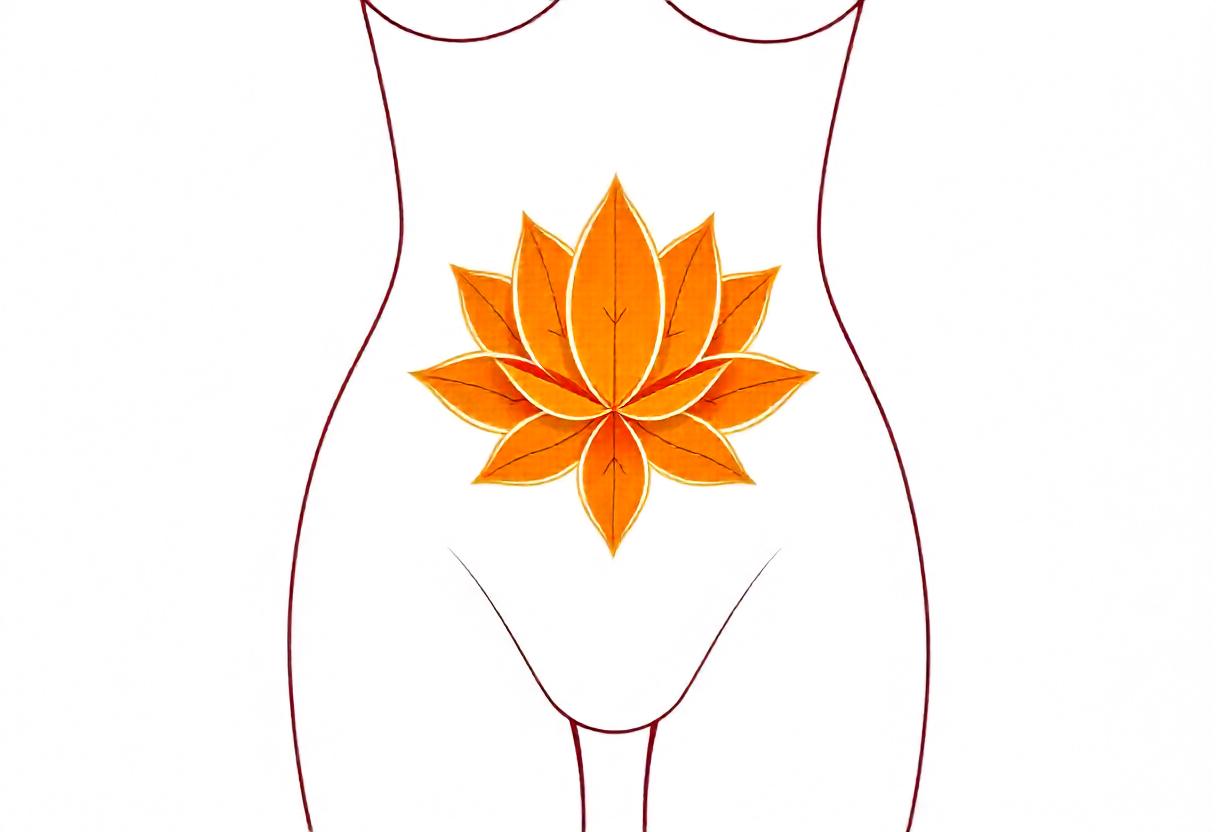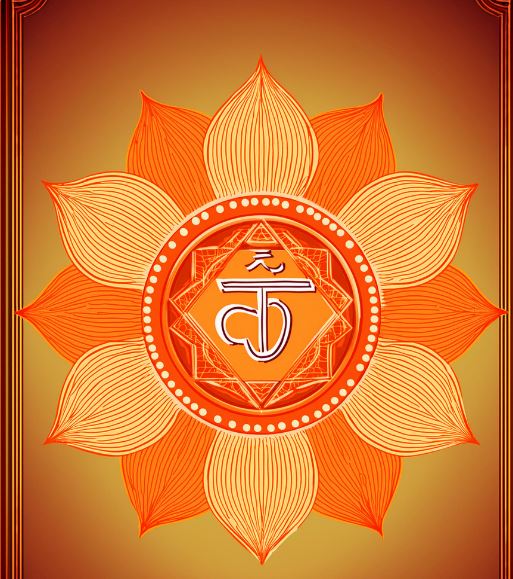The Swadishtana chakra, also known as the Sacral Chakra, is the second of the seven primary energy centers (chakras) in the human body. Located just below the navel, it is the seat of our creative energy, emotions, pleasure, and relationships. In Sanskrit, “Swadishtana” translates to “one’s own abode,” symbolizing the intimate connection we have with ourselves and the external world. When this chakra is balanced, it paves the way for harmonious relationships, creative expression, emotional stability, and overall life success.
The Vedas, Upanishads, and other ancient scriptures offer deep insights into the Swadishtana chakra, its importance, and practices to balance and harness its energy. In this blog post, we will explore these insights, delving into the spiritual significance of the Swadishtana chakra, practical techniques for balancing it, and its profound impact on various aspects of life, including success in career, relationships, and personal growth.

Understanding the Swadishtana Chakra: Its Spiritual and Physical Significance
The Swadishtana chakra is closely associated with the element of water, representing flow, change, and flexibility. In the human body, it governs our emotions, sexuality, and the reproductive system. This chakra is the center of passion and desire, fueling our ability to connect with others, create, and experience pleasure.
From a spiritual perspective, the Swadishtana chakra is connected to the concept of “Svadharma” or one’s personal duty and life path, as outlined in the Bhagavad Gita. It is through this chakra that we gain a deeper understanding of our desires, emotions, and relationships, which are essential for realizing our full potential.
In the Taittiriya Upanishad, the second layer of existence (Pranamaya Kosha) is connected to the Swadishtana chakra. This subtle body is responsible for the energy that sustains the physical body, and when the chakra is imbalanced, it leads to disturbances in both emotional and physical health.
Imbalances in the Swadishtana Chakra
When the Swadishtana chakra is imbalanced, it can manifest in various ways, including:
- Emotional instability: Mood swings, jealousy, or excessive attachment can be signs of an imbalanced chakra.
- Creative blockages: A person may struggle with expressing their creativity or finding inspiration in life.
- Relationship issues: Difficulty in maintaining healthy, fulfilling relationships can arise from a blockage in this chakra.
- Guilt and shame: Unresolved emotions related to guilt or shame, especially around sexuality, can point to a blocked Swadishtana.
- Addictive behaviors: Overindulgence in physical pleasures or addictive patterns can result from an imbalanced chakra.
- Physical symptoms: Lower back pain, urinary or reproductive issues, and digestive problems may indicate an energy blockage in the sacral chakra.
An imbalance in this chakra can hinder personal and professional growth. Since the Swadishtana chakra governs creativity, a blockage here can prevent individuals from exploring new opportunities or pursuing their dreams, making it essential for success in both personal and professional life.
Swadishtana Chakra in the Vedas and Upanishads
The concept of the chakras is deeply embedded in the Vedic and Upanishadic traditions. Although the detailed chakra system as understood today evolved later, the foundational energy systems are discussed in ancient Vedic texts. The Yajurveda speaks of the connection between the human body and the cosmos, indicating that energy points (chakras) regulate human experiences.
The Shvetashvatara Upanishad mentions the subtle body and the channels through which energy (prana) flows. Although the chakras are not explicitly mentioned, the understanding of energy systems aligns with the concept of balancing the body’s energy for spiritual growth.
The Brihadaranyaka Upanishad discusses how prana governs the mind and the body, and any imbalance in prana (life force) can lead to both physical and emotional disturbances. By balancing the Swadishtana chakra, one can restore the free flow of prana, leading to emotional well-being and spiritual growth.
The Role of Mantras in Balancing the Swadishtana Chakra
In Vedic tradition, mantras play a crucial role in balancing the chakras, including the Swadishtana. Mantras are vibrational tools that align the energy centers, allowing prana to flow harmoniously through the body. For the Swadishtana chakra, the Vam mantra is the bija (seed) sound. Chanting this mantra helps activate and cleanse the chakra, promoting balance.
The Gayatri Mantra, though primarily associated with the invocation of the sun’s energy, can also be used for overall chakra balancing. Since it works on purifying the mind and body, it can indirectly help balance the Swadishtana chakra by harmonizing the energy systems.
The Shakti Mantras or the mantras dedicated to the divine feminine energy (Shakti) can also be highly effective in balancing the Swadishtana chakra, as this chakra is associated with the creative feminine energy in the body. Chanting mantras like “Om Shakti Namah” helps to awaken the dormant creative forces and realign emotional energies.
Techniques for Balancing the Swadishtana Chakra
1. Meditation and Visualization
One of the most effective ways to balance the Swadishtana chakra is through meditation. Visualization techniques can help cleanse and energize the chakra. During meditation, visualize a vibrant orange sphere of light swirling just below your navel. Imagine this light expanding, filling your body with warmth, creativity, and emotional stability.
Focus on releasing any emotional blockages that may arise during the process. Acknowledge the emotions, let them pass, and visualize the orange light growing brighter and more balanced. Regular practice of this meditation helps activate the Swadishtana chakra, leading to increased creativity, emotional resilience, and better relationships.
2. Pranayama (Breath Control)
Pranayama exercises, especially those that focus on deep abdominal breathing, are excellent for balancing the Swadishtana chakra. The Kapalabhati Pranayama (skull-shining breath) and Nadi Shodhana (alternate nostril breathing) help in clearing energy blockages and restoring balance to the chakra.
- Kapalabhati Pranayama: Involves short, powerful exhalations and passive inhalations, which stimulate the abdominal muscles and the Swadishtana chakra. This practice helps clear emotional blockages and energizes the body.
- Nadi Shodhana: This technique balances the flow of prana in the body and promotes a harmonious connection between the physical and emotional aspects of existence. It restores balance to both the Ida and Pingala nadis (energy channels), which directly impact the functioning of the chakras.
3. Yoga Asanas
Specific yoga postures are known to activate and balance the Swadishtana chakra. These include:
- Baddha Konasana (Bound Angle Pose): Opens the hips and stimulates the reproductive organs, helping to activate the Swadishtana chakra.
- Utkata Konasana (Goddess Pose): This pose opens the hips and strengthens the pelvic area, which is directly related to the Swadishtana chakra.
- Bhujangasana (Cobra Pose): Strengthens the lower back and pelvis, while also increasing the flow of energy through the Swadishtana chakra.
4. Chanting and Sound Therapy
Sound is a powerful tool for balancing the chakras. Chanting the bija mantra “Vam” while focusing on the sacral area helps stimulate and balance the Swadishtana chakra. You can also use instruments like Tibetan singing bowls or tuning forks, tuned to the frequency of the sacral chakra, to clear any energetic blockages.
5. Crystals and Aromatherapy
The use of crystals like carnelian, orange calcite, and moonstone can support the healing process of the Swadishtana chakra. These crystals carry vibrational frequencies that resonate with the sacral chakra, helping to restore balance and harmony.
Similarly, essential oils such as sandalwood, jasmine, and ylang-ylang can aid in balancing this chakra. You can use these oils during meditation, yoga, or apply them to the lower abdomen area to activate and harmonize the chakra.
The Swadishtana Chakra and Success
The Swadishtana chakra plays a vital role in determining our success in life. By governing our creative expression, emotional health, and ability to connect with others, this chakra directly influences our personal and professional achievements.
1. Creativity and Innovation
The Swadishtana chakra is the seat of creativity. When it is balanced, you are more likely to experience creative breakthroughs, generate new ideas, and approach challenges with an open mind. Whether you’re an artist, entrepreneur, or professional, creativity is essential for innovation and growth.
Many successful individuals credit their achievements to their ability to think outside the box and express their unique talents. A balanced Swadishtana chakra ensures that creative energy flows freely, enabling you to tap into your full potential.
2. Emotional Intelligence
Emotional intelligence is a critical component of success, particularly in the realm of relationships, whether personal or professional. The Swadishtana chakra governs emotions, and when balanced, it promotes emotional stability, empathy, and a deeper understanding of oneself and others.
People with high emotional intelligence tend to navigate social interactions more effectively, maintain healthy relationships, and manage stress better.
CAUTION:
Please reach out to experts in field to learn the above techniques, NEVER attempt on your own.

